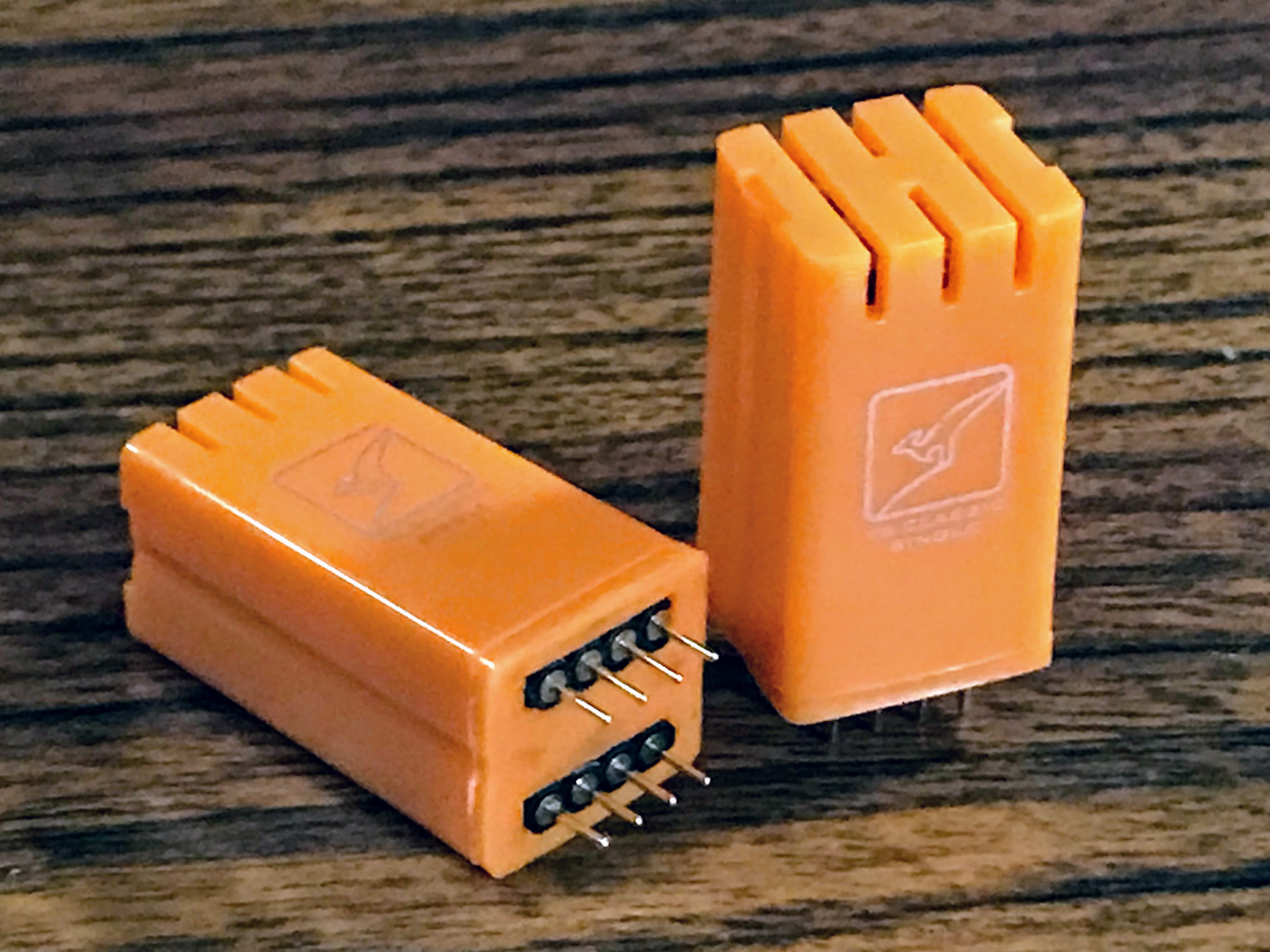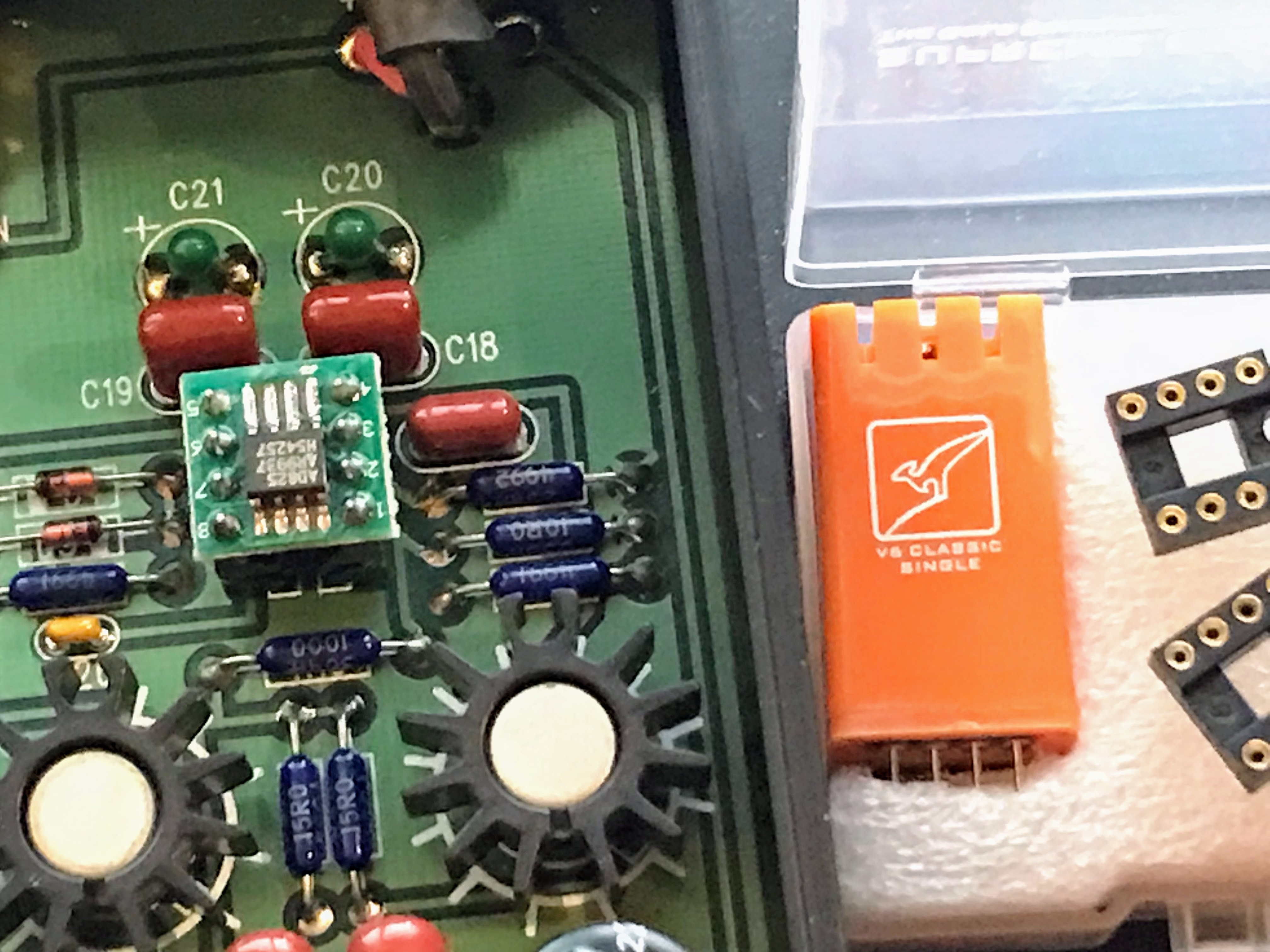In my last adventure with a Burson Audio operational amplifier (op amp for short), we test drove the Burson V6 Vivid op amp in a $160 Little Dot I plus headphone amplifier. You can relive all of our fun by following this link:
https://www.head-fi.org/threads/bur...sion-and-reviews.854912/page-31#post-16542424
Today, we begin a new adventure with Burson Audio V6 Classic op amps. Burson Audio V6 Classic op amps invite the promise of a fresh take on the modern op amp front. The Burson Audio V6 Classic is Burson Audio’s alternative to the Burson Audio V6 Vivid op amp for those of you seeking a change of flavor, or perhaps for those of you seeking to update an older or poor performing op amp.


To start with, we are going to liven up this experiment by utilizing a Ray Samuels HR-2 solid state headphone amplifier. The HR-2 is an $875 ultra-detailed amplifier which has been in production for approximately two decades and is still manufactured and sold today. However the stock op amp, an AD797, is twenty years old. The AD797 op amp was one of the finest available op amps at the time that this amplifier was introduced back in 2003. But much can change over twenty years. While able to reproduce extreme detail and clarity with the stock AD797 op amp, presentation can sound a bit lacking compared to many modern headphone amplifiers that contain newer op amps. Many headphone enthusiasts are able to remedy this by simply swapping out their old op amps with modern offerings.

Reflecting back upon the year 2003, I recall a prominent intense focus of many on a quest for improved detail and clarity from their audio gear. Today, audio enthusiasts along with modern headphone gear, have evolved to expect vast spectrums of heightened characteristics from what has grown into today's vast array of enormous selection of radically evolved audio products. When listening to newer headphone amplifiers side by side to the Ray Samuels HR-2 containing the original stock AD797 op amp, one can readily hear the greater extreme detail that the more expensive HR-2 is able to reproduce. However, the HR-2 presents this detailed sound with comparatively less dynamics, and dimension, leaving much to be desired. In it’s old stock form, this headphone amplifier lacks excitement, yielding a very lackluster unentertaining presentation.


In spirit akin to Dr. Frankenstein, will a pair of cutting edge Burson Audio V6 Classic op amps bring the dead back to life? Can the Burson Audio V6 Classic op amp transform this dated amplifier to relevant modern standards? To find out, we need only swap in the new Burson Audio V6 Classic op amps to observe improvements. By simply removing the top cover of the amplifier (held by four screws), I easily pulled out the old pair of AD797 op amps from the 8-pin sockets and then replaced them in the correct orientation with a brand new pair of Burson Audio V6 Classic op amps. Repeating this installation process multiple times, I was able to note various listening comparisons going back and forth between the old op amps and the new Burson Audio V6 Classic op amps.

Did it work? To begin with, music definitely took on new characteristics. The Burson Audio V6 Classic op amps brought on psychedelics, intimacy, and coziness to name a few of the newly realized improvements. The sound stage became seamless and enveloping. The imaging grew from zero to ultra intense imaging. Rich dynamics improved drastically. Overall, the Burson Audio V6 Classic op amps had made this old amplifier sound like a much modern expensive amplifier. At one point, crazy good imaging fooled my brain into thinking someone was in my hallway. I took off my headphones revealing that what I had heard was from the Adelle track I had been playing. This had most definitely been an improvement.

I continued to complete more comparisons with my modern amplifiers to the newly installed Burson Audio V6 Classic op amps. This upgrade sometimes did yield a narrower sound stage compared to many modern amplifiers, but the imaging abilities of the Burson Audio V6 Classic performed marvelously. Within an imagined matrix of the perceived sonic environment of each recording, an image would fill coordinates in perceived space unconstrained. Where many of my modern amplifiers restricted this to a horizontal plane of perception of left to right, the Burson Audio V6 Classic upgrade formed entirely audible holograms seemingly existing in distinct perceived space containing virtual performers and instruments. With the Burson Audio V6 Classic, violins and orchestra could also project up above the stage to accompany a singer instead of remaining an afterthought placed behind them as backup. The chorus could fill airiness with echoes instead of dull stationary reverberations remaining next to the singer on the stage. Like a fog, sound rolled onto the foot of the stage. Sound also rose up above filling caverns of reflected micro reverberations opening up perceived virtual spaces. A much larger accompaniment projected deeper emotion from the music. It had become much easier to connect with the music or get momentarily transported away with envelopment. Sometimes, I was inadvertently, effortlessly carried away with Burson Audio V6 Classic.
Additionally, the Burson Audio V6 Classic recreated realistic reproduction of prerecorded environments. With a couple of amplifiers, my brain is cognizant that I am listening to a recording and cannot be fooled by their overly forward presentation. The Burson Audio V6 Classic’s enveloping presentation will persuade me to lose myself within the realism. It’s envelope of realism is off the charts. Individual piano strings resonate around me. Instrumentation seemed to be fuller. Even low frequencies typically from bass and tuba appear to fill the environment.
Finally, I would like to make one more distinction about listening at lower volumes with Burson Audio V6 Classic. I often find that I enjoy listening at lower than average volumes. With some amplifiers, I find that I have to raise the volume level to compensate for the loss of clarity. I am pleased that with Burson Audio V6 Classic, my amplifier was able to return to lower volumes while maintaining buttery smooth performance, retaining dynamic punch, pop and clarity. In the long run, listening at these lower volumes could prove safer for the health of my hearing.
Where could the Burson Audio V6 Classic improve? Some very high end amplifiers exhibit more refined highs compared to what I was hearing from Burson Audio V6 Classics. As a personal preference, I have developed an appreciation for clear refined high frequency reproduction. I have friends that prefer recessed treble for a darker or smoother relaxed presentation such as the well known characteristic some find appealing in the Sennheiser HD650 headphone. This might be good for someone looking for a non fatiguing listening session or perhaps someone that likes to listen at higher volumes without the toll of shrieking treble. Some seek this characteristic in order to listen over longer listening periods or perhaps to remove shouty-ness from their system. Conversely, some would describe this as losing its sparkle. I am of the latter group. A minority that happen to dislike the HD650 headphone on all solid state amplifiers because I do not enjoy overly dark or mellow presentations. It is a personal taste that one determines individually. In this case, with the Burson Audio V6 Classic, I do hear this recessed treble characteristic. So, I prefer the Burson Audio V6 Vivid over the Burson Audio V6 Classic. The Burson Audio V6 Vivid being more brilliant and sparkly. Which my brain translates to liveliness.

As you can see, the Burson Audio V6 Classic succeeded in reviving my classic headphone amplifier. I am, however, going to have to give the nod to the Burson Audio V6 Vivid over the Burson Audio V6 Classic as my preferred op amp. You however may prefer the Classic, as we all have different ears and each have our own unique personal preferences.









